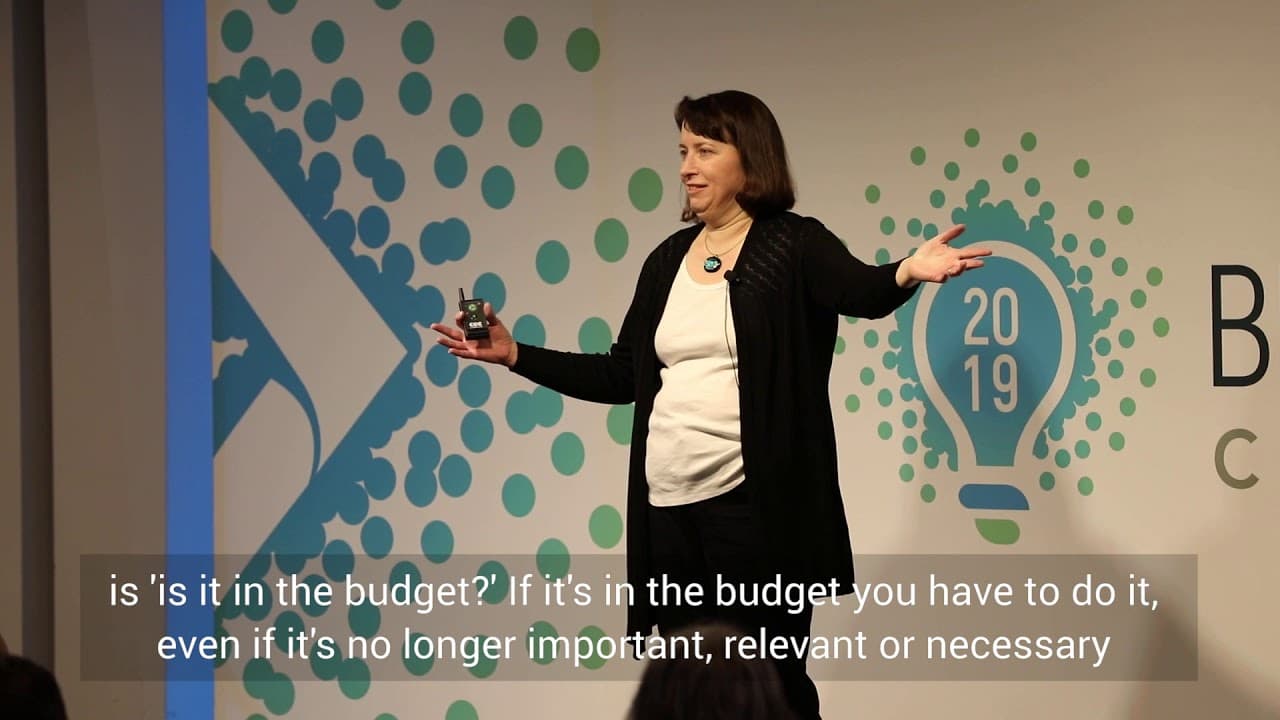It was a cool, blue-sky winter morning in January of 2004 in Littleton, Colorado, just south of Denver. I was sitting in a very nondescript office building, being head of planning for a telecom company, a little bit to the right of what this slide shows in your picture. I was waiting to see my boss, the CFO. He had just returned from our board meeting where our budgets had been presented for approval.
It was the end of January, so I only had a few days left to do my job, which was to get all that budget detail into our financial system so that we could close January. He was sitting at his desk as I knocked on the door, and the conversation went something like this:
"Hey, Des. So how’d it go at the board meeting?"
"Fine."
"So, the budget got approved?"
"Yes."
"Great, so I can set the team loose unloading it into the system?"
"Yes."
He was a pretty monosyllabic guy—unless he was yelling at somebody. Then, some really choice words came out. But I was thinking, Great, mission accomplished, and I was about to walk out the door when Naveen picked up this tome of a budget book that we had created—about the size of a New York phone book, back when those still existed.
"This is worthless," he said. "This tells me nothing about what we need to do to manage our business. These numbers are all made up—we all know that. It doesn’t tell us about the risks or the opportunities or how we should respond to whatever is going to come at us out there."
Then, he took this book that I had spent the last six months of my life creating and threw it in the trash can right there. He turned to me and said, "Naveen, find a better way."
Those words started us on a journey of incredible transformation—one that originated in finance, which is not usually where transformation starts. Finance is about two things: inward-looking institutionalization (and sometimes, that applies to the people working in finance, too—I say that with great pride because I am one of those people). But this journey ultimately led us to be much more responsive, effective, and very successful.
Background on TW Telecom
For some context, TW Telecom was a fiber-optic telecommunications provider offering B2B services. We had regional networks across the country, building fiber-optic cables into customer buildings. It was a publicly held company that grew to about $1.6 billion in revenue, with EBITDA margins in the mid-30% range.
In telecom, for those who may not realize, 30% EBITDA margins are spectacular. Our CEO used to say, "We’re like a nice house in a bad neighborhood."
As we were growing, we started feeling the pressure and the bureaucracy that comes with size. A lot of that stemmed from our budgeting process, which created really bad behaviors—people negotiating forecasted numbers, hoarding money, and doing things that weren’t in the best interest of making the organization better.
We knew our biggest driver of success was top-line revenue growth, which we generated by building fiber-optic cable into customer buildings. But to do that, we had to make capital investment decisions quickly—faster than our competition. Our competitors were huge telecom companies, the ones you all know. They were behemoths, and we had to be faster than them in making decisions and responding to customer demands.
Telecom moves fast. Technical obsolescence can absolutely eat your lunch, so you have to stay ahead of it.
Finding a Better Way
So, what do you do when your boss throws down the gauntlet and says, "Find a better way", without any further guidance—especially when he himself didn’t know what that meant?
I did what anyone would do: I Googled it. "What do you do when you don’t do budgets?"
Google led me to a book that had just been published in 2003 by Jeremy Hope and Robin Fraser. They had gone around talking to innovative companies about their planning processes and management systems, and they wrote this book. I thought, Yeah, that’s interesting. That will never work for us.
We had our own culture, our own way of doing business. We had 3,000 people who communicated in a certain way. But I took the ideas from the book and distilled them into a white paper that I gave to my boss.
My main idea—being a finance geek—was to replace budgets with rolling forecasts.
He noodled on it for a weekend and then said, "Let’s chat." We kicked it back and forth a bit, then took it to the executive team and the board. They said, "Yeah, sounds good. Let’s do it."
Of course, they were all scarred from our last budgeting process, because that’s what we in finance do to people—we scar them. So, they were on board, mostly because they wanted to avoid another budgeting cycle.
The Change Management Challenge
I set my finance team loose on what we do best: process maps, spreadsheets, training decks. But as we worked through it, I realized something: this wasn’t just a finance thing. This was a cultural change.
And change was terrifying for our company. We were bad at it.
We were so bad at change that I had previously been part of a task force doing a post-mortem on our last major IT implementation—which had failed spectacularly due to poor change management. Our recommendation had been to hire someone internally to embed change into our DNA.
Enter Tad, our new director of change management.
I called him up: "Hey, Tad. I’m doing this big, important thing, and I could really use your help."
Because here’s the thing: I had to enroll 150 functional leads across different disciplines into this process. Except, at the time, the word enroll wasn’t even in my vocabulary. Finance dictates things. We don’t enroll—we just tell people what boxes to check.
Embedding Finance in the Frontline
One of the biggest breakthroughs came when we embedded half my finance team on the front line.
This was brilliant for two reasons:
- It moved decision-making out to where our customers were.
- It changed the perspective of my finance team.
Instead of being seen as bean counters or revenue prevention, finance became a valued business partner. They saw firsthand what sales and operations dealt with. They saw bottlenecks. And they brought that insight back to corporate, helping us improve processes in ways that actually mattered.



